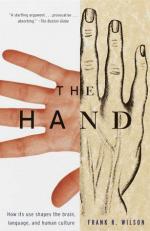
|
| Name: _________________________ | Period: ___________________ |
This test consists of 5 multiple choice questions, 5 short answer questions, and 10 short essay questions.
Multiple Choice Questions
1. Why does the author say juggling might be considered a pastime that accomplishes nothing?
(a) It does not earn you any money.
(b) It has no purpose.
(c) It returns all items used back to their original state.
(d) It replaces the energy it uses but there is not net gain.
2. What does Galvani discover about electrical forces?
(a) They are shorted out by a muscle's contractions.
(b) They are emitted by a muscle's contractions.
(c) They are charged either negative or positive.
(d) The are initiators of action.
3. Who is Robin Dunbar?
(a) A professor of biology.
(b) A professor of genealogy.
(c) A professor of anthropology.
(d) A professor of archeology.
4. What is the weight of the touch of a pianist's fingers on the keyboard?
(a) Less than three ounces per square inch.
(b) About twelve ounces per square inch.
(c) About eight ounces per square inch.
(d) About three pounds per square inch.
5. How many fingers does George saw off his right hand by accident?
(a) 2.
(b) 1.
(c) 3.
(d) 4.
Short Answer Questions
1. What does the author say we are dependent upon that we rarely think about?
2. What enables the human to weigh and relate facts to solve problems?
3. What is the juggling riddle?
4. What does the author say is a choreographed skill?
5. What does Henry Plotkin propose intelligence is?
Short Essay Questions
1. What has to happen in order for the thumb to be useful?
2. Who is David and how is he able to succeed at wrestling despite not being very strong?
3. What aspects of the human capacity for passionate, creative work does Wilson illustrate?
4. What do humans need to move out of the jungle?
5. How does the touch of the pianist differ from that of the rock climber?
6. How did Duchenne demonstrate the physiology of movement?
7. What two terms does Duchenne propose for the scale of movement required by two hands acting in partnership?
8. Who is Merlin Donald and what does he propose?
9. Who is George, and what does Wilson say about him?
10. What does Mary Marzke classify and how does she do so?
|
This section contains 816 words (approx. 3 pages at 300 words per page) |

|




